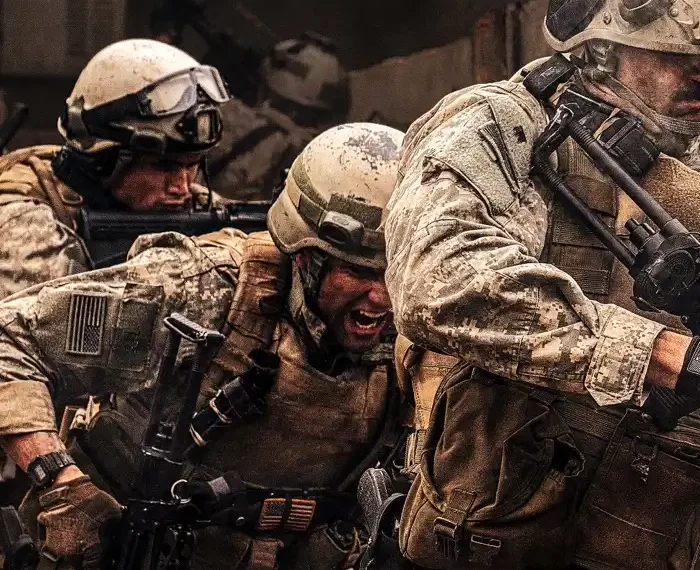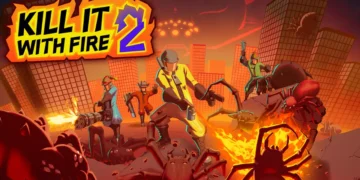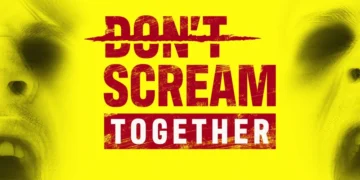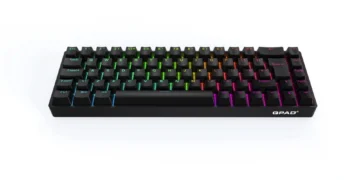Cast: D’Pharaoh Woon-A-Tai, Will Poulter, Cosmo Jarvis, Joseph Quinn
Directors: Ray Mendoza and Alex Garland
Genre: War, Action, Drama
In Irish Cinemas: 18th April 2025
It feels perversely appropriate that Warfare opens not with gunfire or a sombre prologue but with the absurdly horny aerobics video for Eric Prydz’s Call On Me — a 2004 relic of sweat-slicked bodies lunging, grinding, and panting in unison. It’s jarring, funny, and a little grotesque. For a moment, as the clip fills the screen, you wonder — in 2025 — what fresh punishment you’ve signed up for. But then the camera pulls back: we’re watching this alongside a group of young American soldiers, packed into a tiny room, hooting and howling like frat boys on shore leave. This is their downtime. Their moment of levity. It’s also the last one they — or we — will get for a long time.
This is the calm before the storm.
This opening feels perfectly chosen for a film that soon wages total sensory war on its audience. It’s crude, funny, and, crucially, wordless. No exposition. No forced banter. Just Steve Winwood’s falsetto shrieks through a tinny laptop speaker while a tightly bonded unit of Navy SEALs loses themselves in a moment of shared stupidity. It tells us everything we need to know: these men know each other intimately. They’ve lived in each other’s pockets. They don’t need to talk much. They don’t need to explain themselves to us — or each other.
That economy runs through the entire film. Warfare is stripped to the bone — lean, taut, almost ascetic. There is not a gram of narrative fat on its frame.
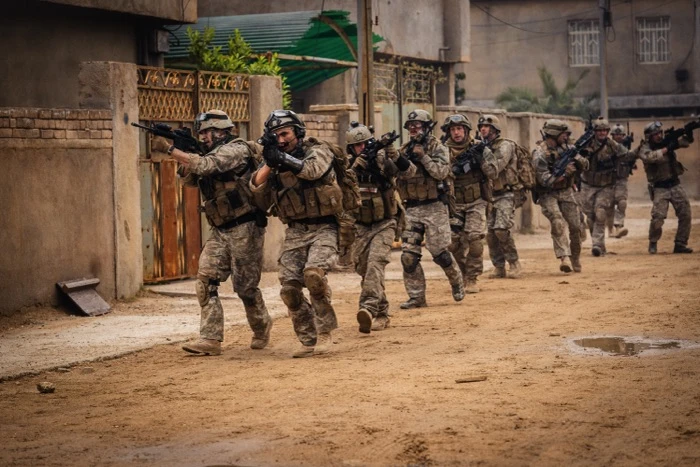
Set in 2006 during the Iraq War, the film follows this SEAL team as they covertly seize an apartment from a terrified Iraqi family in the dead of night. They aim to set up a sniper’s nest and observe targets across the street. For the first 30 minutes, there is little violence. Just the quiet, clinical business of war: clearing rooms, setting up equipment, watching, waiting. It’s a process film — tense and procedural.
At the start, we’re told the film is drawn solely from the memories of Ray Mendoza — played here with coiled intensity by D’Pharaoh Woon-A-Tai — and his fellow soldiers. Mendoza, a real-life Navy SEAL who later became a military advisor on Hollywood productions (including Alex Garland’s Civil War), co-directs Warfare with Garland himself. Their division of labour was clear: Mendoza worked directly with the actors to ensure authenticity; Garland handled the camera. Together, they wrote a script that feels startlingly un-scripted — sparse, unsentimental, utterly free of contrivance. There are no dramatic speeches. No backstories unspooled. No heroic monologues. Just the work — and the waiting.
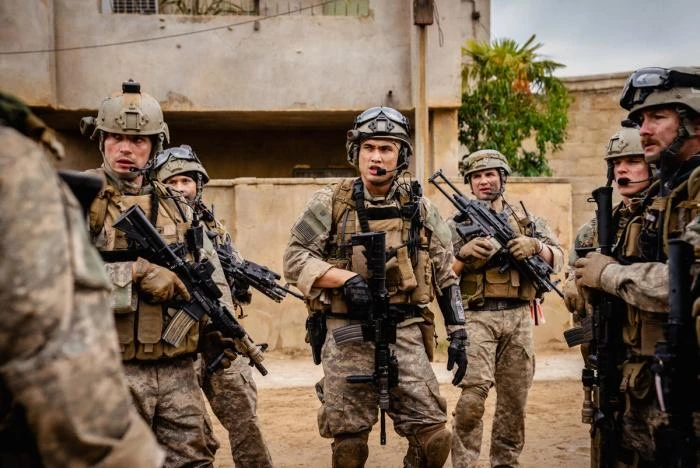
And then — without warning — all hell breaks loose.
Al-Qaeda insurgents launch an all-out assault, and from that moment on, Warfare becomes relentless. The battle sequence — which occupies the bulk of the film — plays out in near real-time, with an unyielding focus on immersion over spectacle. There is no reprieve. There are no clean action beats. Just chaos: claustrophobic, deafening, and suffocating. Your pulse skyrockets; your breath shortens. The film achieves the rare and disturbing feat of making the viewer feel trapped alongside its characters.
Initially, Garland’s camera is composed and observational, but as the soldiers’ situation deteriorates, so does the visual style. The frame tightens and becomes more erratic, handheld, and uncomfortably intimate. In one stunning sequence on the street, the camera ducks and jolts with such forceful immediacy that you instinctively flinch from phantom gunfire.

But even amidst the carnage, there is precision. The film lingers not on grandiose destruction but on the small, human details of war: cracked, bloodless lips; faces smeared with dust and sweat; eyes wide with terror or hollowed out in shock. Sound becomes a weapon— the percussive snap of gunfire, the stomach-churning boom of explosions, the bone-rattling roar of jets overhead. And the screaming — raw, guttural, inescapable.
Your local cinema’s sound system may never recover.
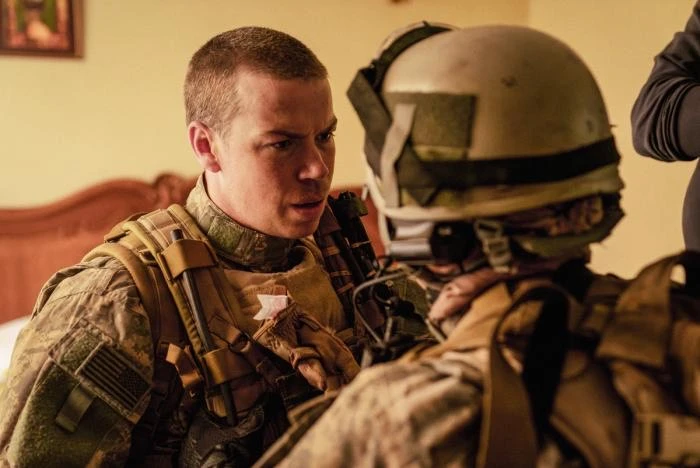
Despite its technical bravura, Warfare never feels showy or indulgent. There are no stylistic fireworks here — just brutally compelling storytelling, stripped of affectation. It presents war not as a spectacle but as an ordeal. And while the film focuses exclusively on the American soldiers — bound by the limitations of its source material — it never feels jingoistic or self-congratulatory. Garland and Mendoza refuse to politicise the story, yet their position is unmistakably clear: this is hell for everyone.
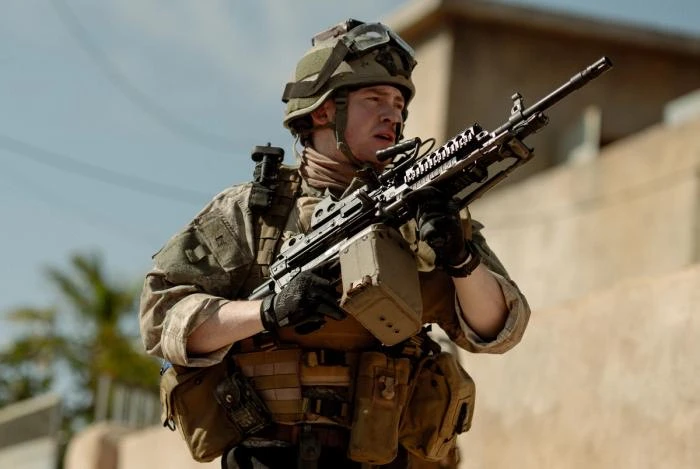
There is no romanticizing war here, no glossy slow-motion hero shots, no manipulative score swelling beneath moments of sacrifice. In fact, there is no musical score at all—the filmmakers trust the reality of the moment to carry its own emotional weight. And it does—devastatingly.
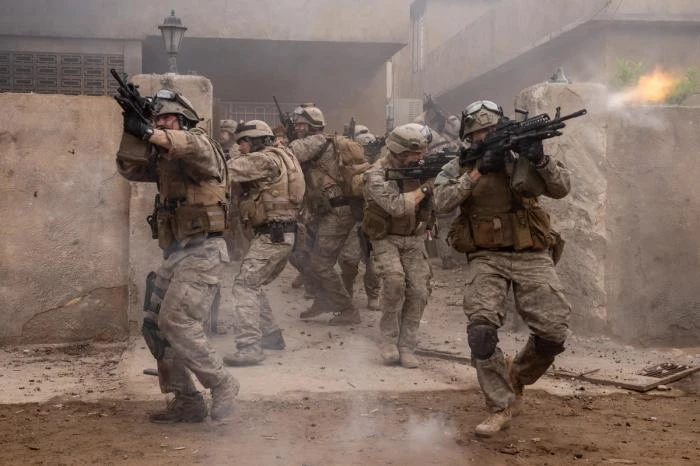
By the end, all that remains is physical, emotional, and spiritual wreckage. But cinematically, Warfare is electrifying. It offers us the rare privilege of witnessing this maelstrom from a place of safety — a darkened theatre, a plush seat — without having to pay the unimaginable price of living through it.
War is hell. Warfare knows it, shows it, and refuses to flinch.
Not once.
Overall: 8/10

